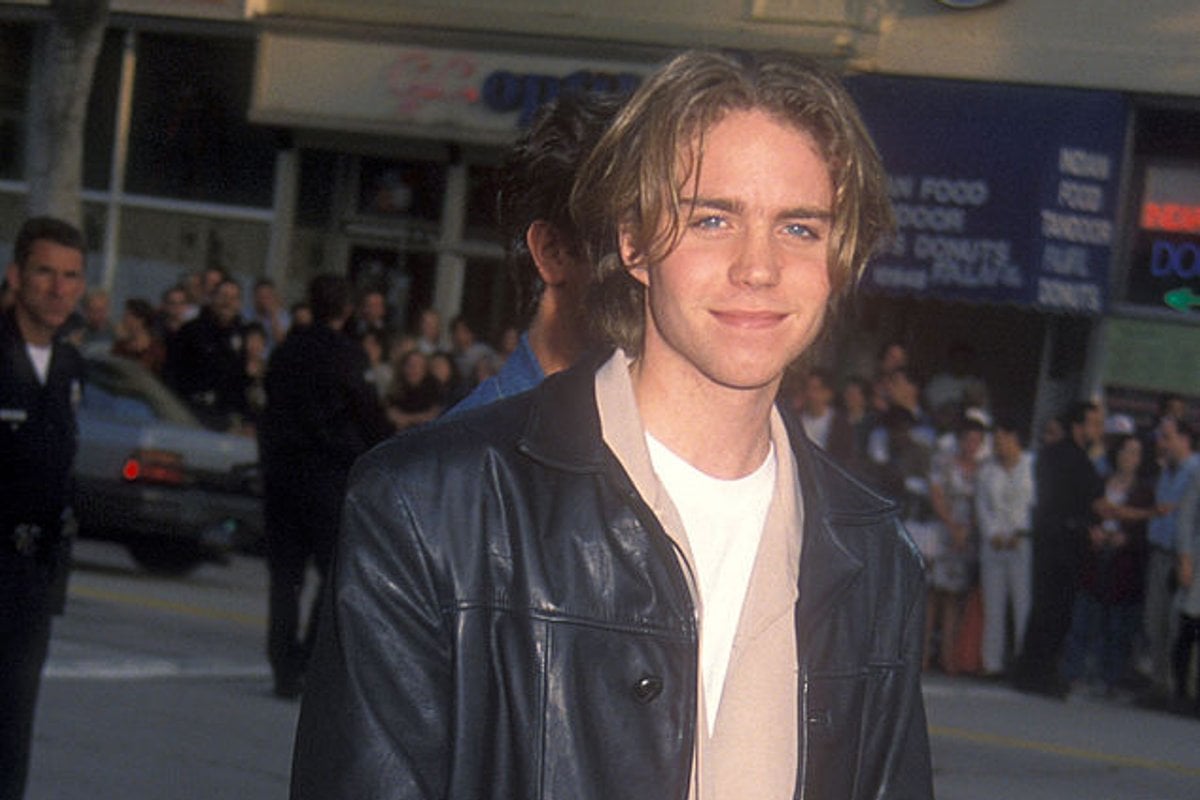Jonathan Brandis, a beloved child star, faced a tragic end marred by abuse. His story highlights the devastating consequences of childhood trauma and the importance of seeking help.
Jonathan Brandis (1976-2003) rose to fame for his roles in "SeaQuest DSV" and "Ladybugs." However, behind the scenes, he endured years of physical and emotional abuse at the hands of his abusive father. The trauma he suffered left lasting scars that ultimately contributed to his untimely death.
Importance and Benefits of Understanding Jonathan Brandis's Abuse:
Raises awareness about the prevalence and severity of child abuse. Encourages victims to seek help and support. Highlights the long-term effects of abuse on individuals and society. Promotes prevention efforts by educating parents and caregivers about the signs and consequences of abuse.
Personal Details of Jonathan Brandis:
| Full Name | Birth Date | Death Date | Known for |
|---|---|---|---|
| Jonathan Gregory Brandis | April 13, 1976 | November 12, 2003 | Acting, singing, directing |
Main Article Topics:
Jonathan Brandis's Abuse
Types of Abuse
Impact of Abuse
Seeking Help
Jonathan Brandis's Abuse
Jonathan Brandis's abuse at the hands of his father was a complex and traumatic experience that had a profound impact on his life. The following key aspects provide a deeper understanding of the various dimensions of his abuse:
- Types of Abuse: Physical, emotional, and sexual
- Impact of Abuse: Trauma, addiction, and mental health issues
- Seeking Help: Breaking the cycle of abuse
- Societal Impact: The prevalence and consequences of child abuse
- Prevention: Educating parents and caregivers
These aspects are interconnected and highlight the severity and long-lasting effects of abuse. Brandis's story serves as a reminder of the importance of seeking help, breaking the cycle of abuse, and raising awareness about this critical issue.
Personal Details of Jonathan Brandis:
| Full Name | Birth Date | Death Date | Known for |
|---|---|---|---|
| Jonathan Gregory Brandis | April 13, 1976 | November 12, 2003 | Acting, singing, directing |
Types of Abuse
Jonathan Brandis was subjected to various types of abuse, including physical, emotional, and sexual. His father's physical abuse ranged from beatings to being thrown against walls. The emotional abuse included constant belittling, humiliation, and isolation. Brandis also endured sexual abuse at the hands of his father, starting at a young age.
The combination of physical, emotional, and sexual abuse had a devastating impact on Brandis's life. The physical abuse left him with chronic pain and injuries. The emotional abuse eroded his self-esteem and made him feel worthless. The sexual abuse caused him to feel ashamed and violated.
The abuse Brandis suffered is a tragic example of the different types of abuse that children can experience. It is important to understand the different forms of abuse so that we can better identify and help victims. If you or someone you know is being abused, please reach out for help. There are many resources available to support victims of abuse.
Impact of Abuse
The abuse that Jonathan Brandis endured had a profound impact on his mental and emotional health. He struggled with depression, anxiety, and post-traumatic stress disorder (PTSD). He also turned to alcohol and drugs to cope with the pain of his abuse.
- Trauma:
The abuse that Brandis suffered caused him to experience significant trauma. He had nightmares, flashbacks, and difficulty sleeping. He also avoided situations that reminded him of his abuse.
- Addiction:
Brandis turned to alcohol and drugs to numb the pain of his abuse. He struggled with addiction for many years and it ultimately contributed to his death.
- Mental health issues:
In addition to trauma and addiction, Brandis also struggled with mental health issues such as depression and anxiety. He was prescribed medication for his mental health conditions, but he often did not take it as prescribed.
The impact of abuse on Brandis's mental and emotional health is a tragic example of the devastating consequences of child abuse. It is important to understand the potential impact of abuse so that we can better support victims and prevent future cases of abuse.
Seeking Help
In the context of Jonathan Brandis's abuse, seeking help was crucial for breaking the cycle of abuse and finding healing. Despite the challenges he faced, Brandis reached out for help on multiple occasions, including therapy and support groups. However, the trauma he endured made it difficult for him to fully engage in the healing process, and he ultimately succumbed to his struggles.
- Recognizing the need for help:
Brandis's story highlights the importance of recognizing the need for help when experiencing abuse. Whether it's physical, emotional, or sexual abuse, seeking professional assistance is essential for breaking the cycle and starting the healing journey.
- Finding the right support system:
Finding the right support system is crucial for victims of abuse. This includes therapists, support groups, and trusted individuals who can provide a safe and understanding environment for healing.
- Facing the challenges of recovery:
The recovery process from abuse is often challenging and can involve setbacks. Brandis's struggles with addiction and mental health issues demonstrate the complexities of healing from trauma.
- Breaking the cycle for future generations:
Seeking help and breaking the cycle of abuse can have a profound impact on future generations. By addressing the trauma and preventing further abuse, individuals can create a healthier and safer environment for themselves and their loved ones.
Jonathan Brandis's story serves as a reminder of the importance of seeking help to break the cycle of abuse. While the journey may be difficult, it is essential for healing and creating a better future.
Societal Impact
The prevalence of child abuse is a serious societal issue with far-reaching consequences. Jonathan Brandis's abuse serves as a tragic example of the devastating impact child abuse can have on individuals, families, and communities.
Child abuse has been linked to a range of negative outcomes, including physical and mental health problems, substance abuse, criminal behavior, and social isolation. Abused children are more likely to experience depression, anxiety, and post-traumatic stress disorder (PTSD) as adults. They are also more likely to engage in risky behaviors, such as unprotected sex and substance abuse, which can lead to further health problems.
The societal costs of child abuse are also significant. Child abuse costs the United States billions of dollars each year in healthcare, social services, and lost productivity. It also contributes to the cycle of poverty and crime.
Jonathan Brandis's story highlights the urgent need to address the issue of child abuse. By raising awareness, providing support for victims, and working to prevent child abuse from occurring in the first place, we can create a safer and healthier society for all.
Prevention
Jonathan Brandis's abuse could have potentially been prevented if his parents and caregivers had been better educated about the signs and consequences of child abuse. Educating parents and caregivers about child abuse is essential for preventing future cases of abuse.
There are a number of things that parents and caregivers can do to help prevent child abuse, including:
Learning about the signs and symptoms of child abuse.Talking to children about child abuse and encouraging them to report any abuse that they experience or witness.Creating a safe and supportive home environment for children.Supervising children and monitoring their activities.Seeking professional help if they suspect that a child is being abused.Educating parents and caregivers about child abuse is a critical step in preventing future cases of abuse and protecting children from harm.Frequently Asked Questions about Jonathan Brandis Abuse
This section addresses commonly asked questions and misconceptions regarding Jonathan Brandis's abuse. It aims to provide clear and informative answers, raising awareness and promoting understanding.
Question 1: What were the signs of abuse in Jonathan Brandis's case?
Jonathan Brandis exhibited various signs of abuse, including physical injuries, emotional distress, and behavioral changes. He often had unexplained bruises, cuts, and burns. He also displayed signs of anxiety, depression, and low self-esteem. Additionally, Brandis engaged in self-destructive behaviors, such as substance abuse and risky sexual activities.
Question 2: Why didn't Jonathan Brandis report the abuse?
There are several reasons why victims of abuse may not report it. In Brandis's case, he likely feared retaliation from his abusive father. He may have also felt ashamed or embarrassed about the abuse. Additionally, Brandis may have been isolated from potential sources of support, making it difficult for him to seek help.
Summary: Understanding the signs of abuse and the reasons why victims may not report it is crucial for preventing and addressing child abuse. Jonathan Brandis's story highlights the devastating consequences of abuse and the importance of providing support and resources to victims.
Conclusion
Jonathan Brandis's abuse was a tragic example of the devastating impact child abuse can have on individuals and society. His story highlights the importance of recognizing the signs of abuse, providing support to victims, and working to prevent child abuse from occurring in the first place.
We must all work together to create a world where children are safe from abuse. We must educate ourselves about the signs of abuse, speak out against it, and support organizations that are working to prevent child abuse.


